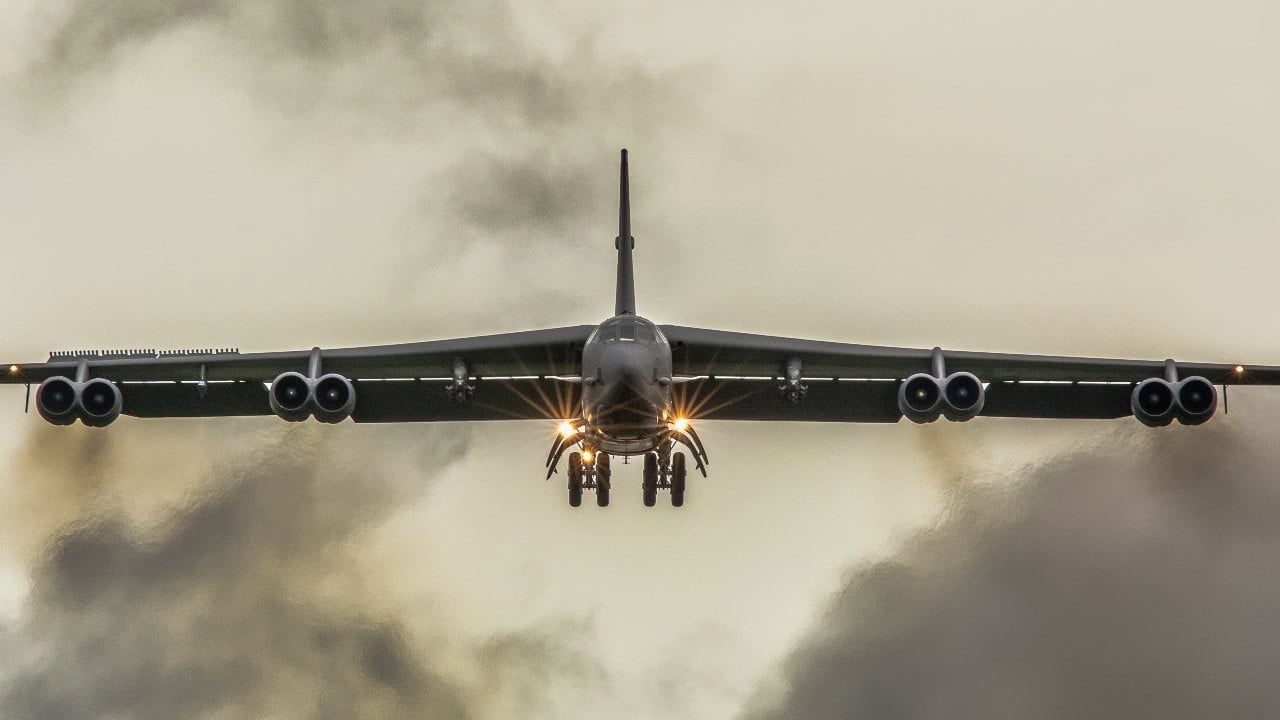The U.S. Air Force's B-52 Bomber Is Flying Everywhere These Days

Summary and Key Points: Earlier this month, two U.S. Air Force B-52 Stratofortress bombers from Barksdale AFB undertook a notable mission as part of Bomber Task Force (BTF) 24-4, flying over Europe and the Middle East.

-One B-52 flew from Romania to the Middle East in a 32-hour mission amid rising tensions in Iraq and Syria, integrating with NATO allies and enhancing agile combat employment tactics.
-The mission included support from KC-135 Stratotankers and A-10 Thunderbolt II aircraft. Despite a mechanical issue grounding one bomber, the mission underscored the B-52's enduring role, with plans to keep it operational through the 2040s with future upgrades.
U.S. Air Force B-52s Made Flight Over Middle East
Earlier this month, a pair of Boeing B-52 Stratofortress long-range strategic bombers from the 2nd Bomb Wing, Barksdale Air Force Base (AFB), Louisiana, made an epic flight to Mihail Kogalniceanu Airbase, Romania, as part of the Bomber Task Force (BTF) 24-4 mission. The aircraft's time in the air was extended as the bombers took a route via the North Sea and the Barents Sea before passing over NATO member nation Finland.
As previously reported, BTF 24-4 was already notable as it marked the first time a B-52 crossed over Finland, and also the first deployment of the Cold War-era bombers to Romania. As the aircraft flew over the Barents Sea, Russian Mikoyan MiG-29 and Mikoyan MiG-31 fighters were sortied to "intercept" the American bombers.
This Bomber Is Continuing to Log the Miles
While deployed to Europe B-52s operated as the 20th Expeditionary Bomb Squadron, according to the U.S. Air Forces in Europe (USAFE) – Air Forces Africa (AFAFRICA). During the BTF 24-4 mission, the pair of Stratofortress bombers successfully integrated with NATO allies and other international partners.
"In today's global environment, it is vital that we be postured to deliver a range of sustainable capability from great distances. This iteration of Bomber Task Force offers an excellent opportunity to refine our agile combat employment tactics, techniques, and procedures," said Gen. James Hecker, USAFE-AFAFRICA commander. "Through collaborative efforts with our Allies, the U.S. enables our forces to combat current and future threats."
The bomber crews didn't have time to take in the sights, at least not from the ground.
Just days after landing in Romania, one of the bombers was back in the air, flying from Europe to the Middle East late last week. The thirty-two-hour flight on July 25 and July 26 occurred as U.S. forces in Iraq and Syria came under attack, Air & Space Forces magazine reported.
Flight tracking data revealed that the bomber took off from Romania, then flew south across Bulgaria and Greece before crossing the Mediterranean Sea, where the Stratofortress entered the U.S. Central Command (CENTCOM) area of operations. The nearly day-and-a-half-long deployment saw the aircraft travel across Jordan, Saudi Arabia, Qatar, and then to the Persian Gulf before the aircraft made a return flight back home to Barksdale AFB.
"The exercise also included KC-135 Stratotankers deployed from Fairchild Air Force Base, Washington, McConnell Air Force Base, Kansas, and A-10 Thunderbolt II aircraft from Selfridge Air National Guard Base, Michigan," the U.S. Air Force Central Command further announced. The KC-135s and A-10s are also reported to have been deployed to the Middle East for ongoing U.S. operations in the region.
Is the B-52 Showing Its Age?
It was also reported that only one of the pair of B-52 made the Middle Eastern flight as the second reportedly suffered "mechanical problems" and didn't take off, according to reports from social media. Though the second B-52 is also back home now, this is a reminder of why it is so important that the Air Force deploys the aircraft in pairs or more – which ensures that the mission can be completed.

The B-52s have been flying since the mid-1950s, and while continually upgraded and enhanced, the aircraft is far older than their current crews. The United States Air Force intends on keeping the B-52s in operation through the 2040s or later, with future upgrades including new Rolls-Royce engines and cockpit layout.
Author Experience and Expertise: Peter Suciu
Peter Suciu is a Michigan-based writer. He has contributed to more than four dozen magazines, newspapers, and websites with over 3,200 published pieces over a twenty-year career in journalism. He regularly writes about military hardware, firearms history, cybersecurity, politics, and international affairs. Peter is also a Contributing Writer for Forbes and Clearance Jobs. You can follow him on Twitter: @PeterSuciu. You can email the author: Editor@nationalinterest.org.
Image Credit: Creative Commons and/or Shutterstock.
